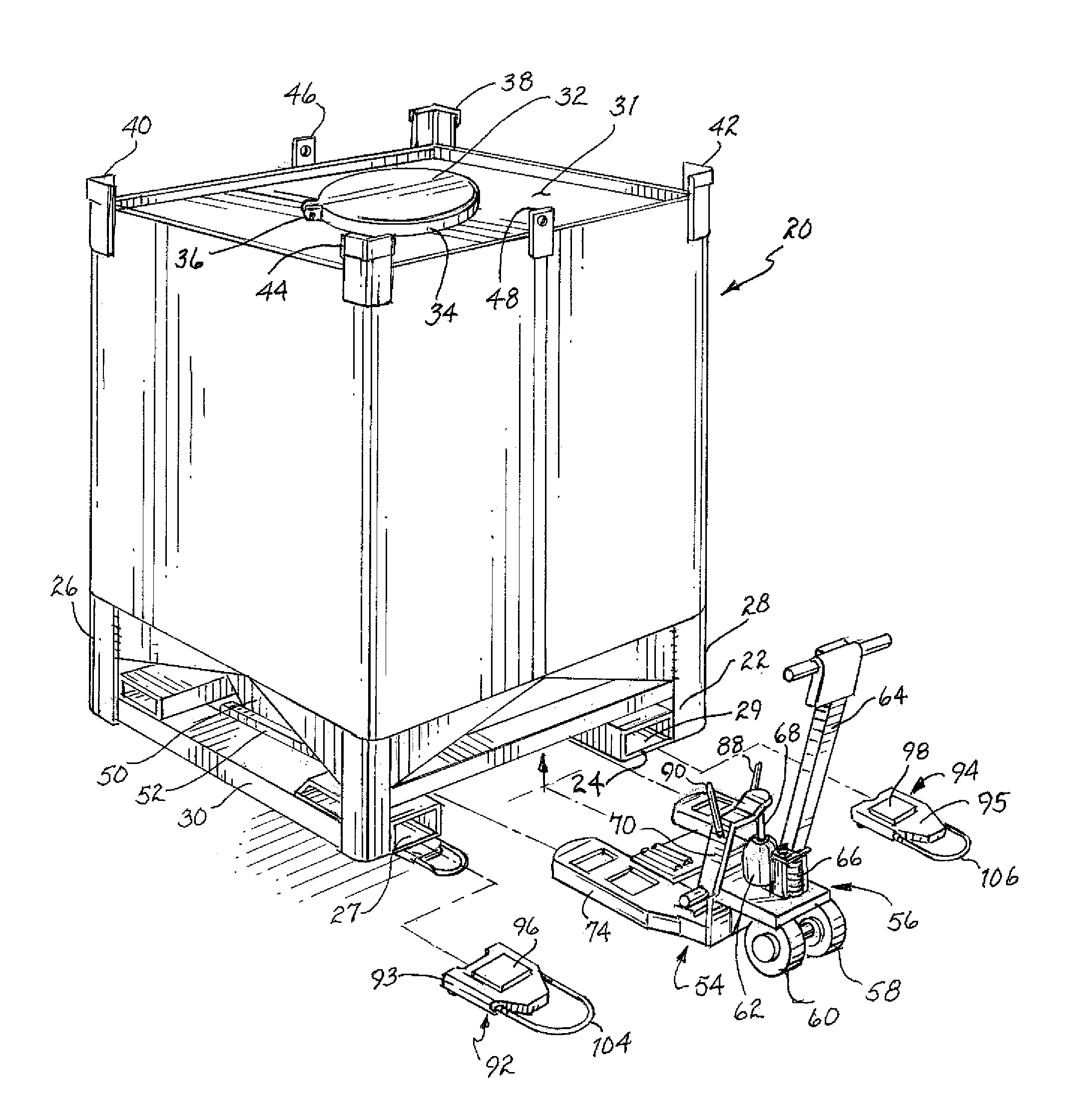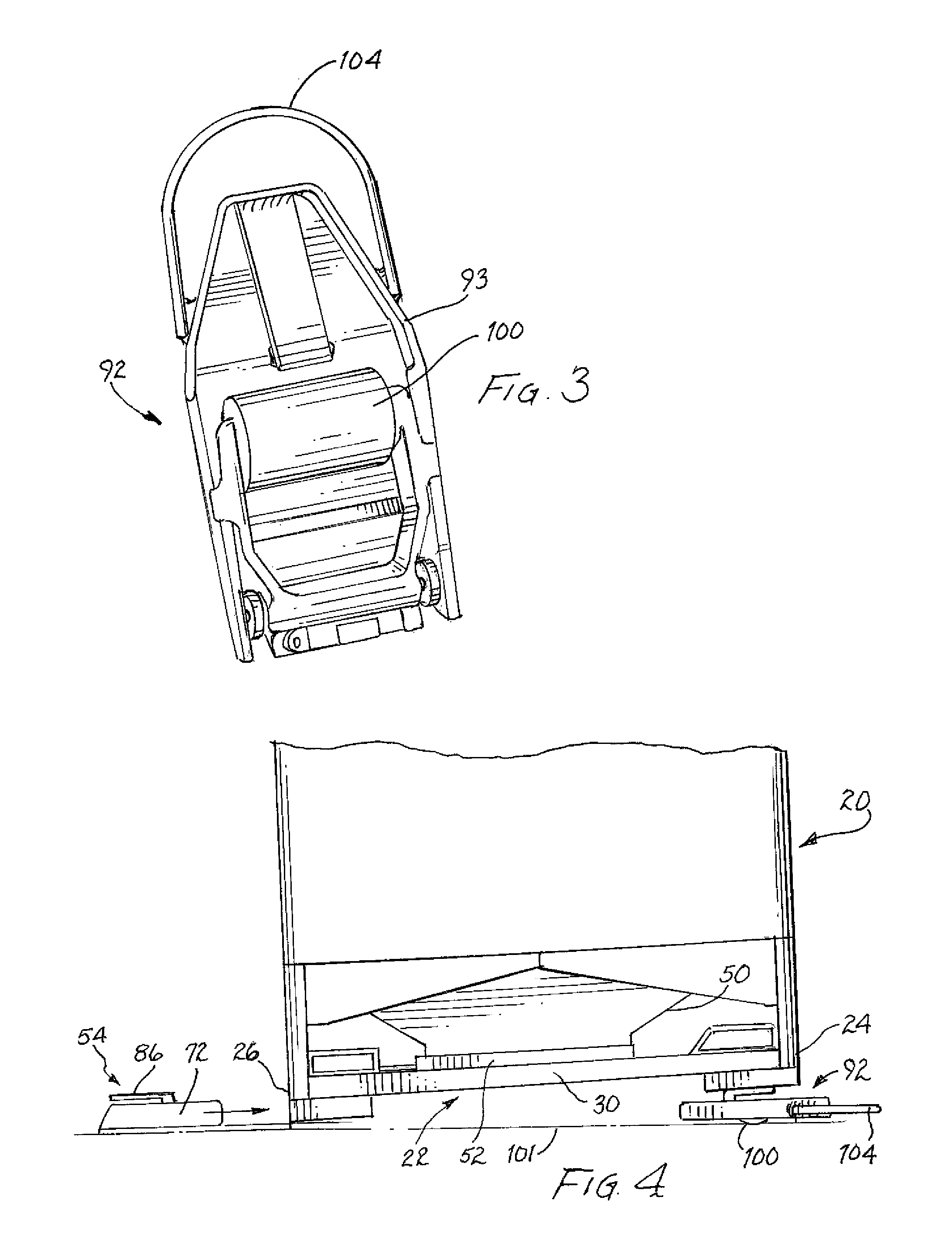Apparatus and method for moving catalyst bins
a technology of apparatus and catalyst bins, which is applied in the direction of hand carts, lifting devices, transportation and packaging, etc., can solve the problems of posing safety and health risks, difficult final placement of catalyst bins within the truck trailer, and insufficient room on the truck trailer to efficiently opera
- Summary
- Abstract
- Description
- Claims
- Application Information
AI Technical Summary
Benefits of technology
Problems solved by technology
Method used
Image
Examples
Embodiment Construction
[0051]A typical catalyst bin, of the type used to haul spent catalyst beads in the oil fracking industry, is shown in FIG. 1, and is designated generally by reference numeral 20. Catalyst bin 20 is conventionally made of heavy gauge steel construction, and includes base 22 which extends between first end 24 and second, opposing end 26. Base 22 also includes first and second opposing sides 28 and 30, respectively. A pair of fork lift ports, or pockets, 27 and 29, are provided within base 22, extending along opposing sides 28 and 30, respectively, and extend fully through base 22 to opposing end 26; pockets 27 and 29 are adapted to receive the forks of a conventional fork lift for raising and moving catalyst bin 20 where circumstances permit.
[0052]Still referring to FIG. 1, the top 31 of catalyst bin 20 includes a filler opening (not visible) for loading material into the catalyst container. The filler opening is shown sealed by a cover 32 that is removably secured over the filler ope...
PUM
 Login to View More
Login to View More Abstract
Description
Claims
Application Information
 Login to View More
Login to View More - R&D
- Intellectual Property
- Life Sciences
- Materials
- Tech Scout
- Unparalleled Data Quality
- Higher Quality Content
- 60% Fewer Hallucinations
Browse by: Latest US Patents, China's latest patents, Technical Efficacy Thesaurus, Application Domain, Technology Topic, Popular Technical Reports.
© 2025 PatSnap. All rights reserved.Legal|Privacy policy|Modern Slavery Act Transparency Statement|Sitemap|About US| Contact US: help@patsnap.com



